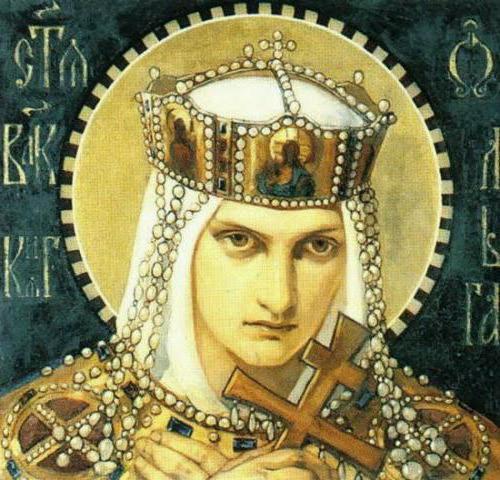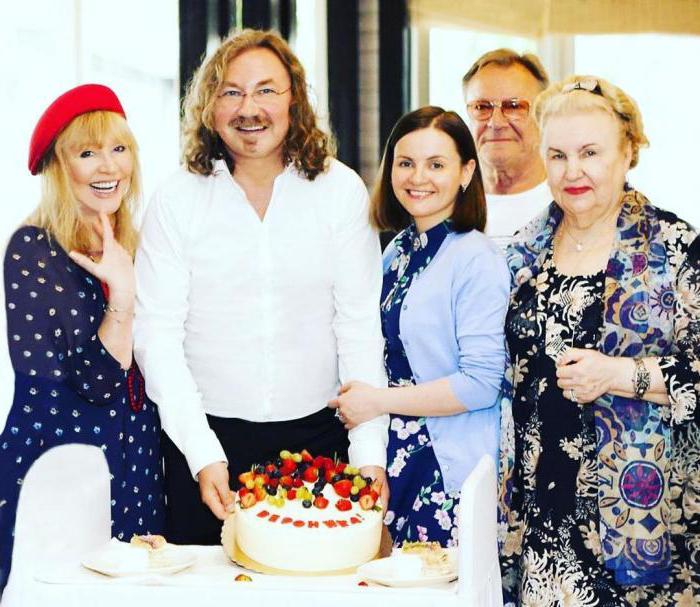Igor the Old. The Board of Igor Rurikovich. Domestic and foreign policy of Prince Igor the Old
Any educated person in our country knows who Igor Old is. The so-called prince of Ancient Rus, son of Rurik and a relative of Oleg the Great, nicknamed the Prophet.
Let us consider in more detail the life and work of this ruler of the ancient Russian state.
Brief biographic information about birth and childhood
According to chronicles, Igor the Old lived a relatively long life for those times. He was born approximately in 878, and died (also approximately) in 945-m.
The years of the reign of Igor the Old cover the period from 912 to 945.
The hero of our narrative was the son of the firstthe Russian prince Rurik, who, according to legend, came to Russia with his brothers and began to reign in Novgorod, and later became the sole ruler of the then Russian state. After the death of Rurik Igor was small for years, so the function of the prince was performed by his relative Oleg (according to one version, he was nephew of Rurik, and on the other - his wife's brother).
Most likely, the young Igor accompanied Oleg inhis military campaigns, where he acquired the skills of a military commander and politician. It is known that he took the throne of his father not after reaching his majority and marriage, but after the death of Prophetic Oleg (according to legend, he died from the bite of a poisonous snake).

Brief biographical information about the prince's family
According to the official version, the year in which Oleg died, nicknamed the Prophet, is the beginning of the reign of Igor the Old. This, as already mentioned, is 912 year. By that time the young prince already had a family.
According to chronicles, when Igor was fulfilled25 years old, he was married to a girl named Olga (she was only 13). However, their son Svyatoslav was born only in 942 (it turns out that at that time, Olga was supposed to be 52 years old, which is impossible). This fact is pointed out by many historians, so it is believed that the age of Olga - the future Grand Duchess and the founder of Christianity in Russia - was smaller. There is also a suggestion that Olga and Igor had children, in particular, some historians mention two sons - Vladislav and Gleb, who probably died in their young years.
Also Byzantine sources indicate thatThe prince was also other relatives (cousins, nephews, etc.). However, in the Russian chronicles there are no mentions of these people. Most likely, they did not own any lands and powers, and were part of Prince Igor's squad. Modern historians consider this version to be the most reasonable, because, most likely, there was a tradition in Ancient Rus, characteristic for European states, according to which official documents only mentioned the ruler, his wife (s) and children, other relatives , and claimants to the throne) did not say a word.

Military campaigns in Tsargrad
Igor the Old made himself famous as an experiencedcommander. It is known that he did more than one military campaign against Byzantium. The Orthodox peoples who inhabited the Byzantine Empire, then suffered greatly from the raids of the barbarians, whom they called the dew.
Historians note the following military campaigns of Igor the Old:
1. According to legend, Igor in 941 sailed to Byzantium, accompanied by thousands of ships, called "rooks." However, the Greeks used the most advanced weapons of that time - the so-called "Greek fire" (a mixture of oil and other combustible substances), which burned most of the warships. Defeated, Igor the Old returned home to Russia to assemble a new army for a new military campaign. And he succeeded.
2. His military meeting included representatives of all the tribes of the then ancient Russian state, both Slavs and Russes, Pechenegs, Drevlyane, etc. This campaign proved to be more successful for the prince, as a result, he concluded with the Byzantines a peace treaty providing for the payment of certain material assets. In this agreement, the text of which the Greeks preserved, it mentions both Igor himself and his wife Olga and their common son Svyatoslav.

Internal policy of Igor the Old
The prince became famous in the ages as a strict man anddemanding. A successful conqueror, he annexed to his state new lands, and then he imposed a tribute to the conquered tribes. The reign of Igor the Old was remembered by the stifling of ulcers and Tivertz, Drevlyans and many other nationalities.
The strongest resistance to the prince wasdrevlyane (their conquest occurred at the dawn of Igor's reign, in 912). They refused to pay tribute, but Igor and his squad ravaged the Drevlyane settlements and, in punishment, obliged local residents to pay even more than before. The Drevlyans reluctantly agreed, but they held a strong grudge against the prince in their hearts.
The internal policy of Igor the Old was different andnew ways of collecting tribute, which he himself called a pole. This procedure was concluded as follows: the prince traveled together with his squadron annually under his territory and collected "tax" from the tribes that lived there. Tribute he took in a natural way: like grain, flour and other food, and skins of wild animals, honey of wild bees and so on. Often the warriors of the prince behaved like daring conquerors, than they inflicted quite a few offenses on ordinary people.

Igor's foreign policy successes
What else did Igor remember the old? Domestic and foreign policy of the prince had an aggressive character, which is not surprising, especially if you remember what was Igor himself (historians note that the prince was very cool and quick-tempered).
His military successes can not be called modest either. He behaved like a real barbarian, with fire and sword cutting a "window" in Europe at that time - the Byzantine Empire.
In addition to the two militarycampaigns to Byzantium, Igor made the same trip to the Caspian Sea. Arab sources tell about him, but in Russian chronicles this is not even mentioned. Little is known about the results of this campaign, but Khazar authors believe that it had some consequences: Igor's army received rich trophies and returned home with the stolen.
Also some historians, relying on the Hungariansources believe that with the Hungarians concluded the union Igor Stary. The prince's foreign policy towards these tribes was allied, there could have been some connections between the Russians and the Hungarians, allowing them to organize joint military campaigns against Byzantium.
Riddles of personality
The reign of Igor the Old, although lasted for many years, but not fully understood due to lack of information about the prince's immediate surroundings and his actions.
The scantiness of information about this historical personality,and also some discrepancies (for example, regarding the dates of his life, years of government, family and death) that occur in various sources, lead to the fact that in the biography of this person there are a lot of blank spots.

So, there are different assumptions aboutof the one who was Igor's mother. For example, V. Tatishchev - a historian of the Petrine era - assumed that she was the Norman princess Efanda. The same Tatishchev believed that the hero of our story was really called Inger, and only later his name was transformed into Igor. The Old Prince received the nickname not during the reign, but much later, thanks to the Russian chronicles, which called him "ancient" or "old." And all because Igor was one of the first Rurikovich.
The main idea of Igor's government
Very firmly entered the Russian history, Prince IgorOld. Results of the government of this Russian ruler are associated with the strengthening of the young ancient Russian state. In fact, Igor continued the policy of his father and Oleg's relative: he expanded the state, made military campaigns that brought many riches, concluded a peace treaty with the Byzantines, introduced a system of taxation for his subjects.
Also, Igor was able to leave behind a powerful heir to Svyatoslav, who continued his work. The theme of the prince Igor the Old not only strengthened his dynasty, but also strengthened his state.

The death of the prince
One of the most famous episodes of Igor's life was his tragic, violent death.
Russian chronicles describe this event as follows: Prince Igor the Old, having won the Drevlyans, annually came to them to collect tribute. He did the same in 945. His squad treated the Drevlyans with disdain, repaired a lot of rigidity, which caused their apparent discontent. In addition, the Drevlyane had a ruler named Mal, who perceived Igor as a victorious rival.
Gathering with drevlyane enough tribute, Princewent with his retinue farther, but on the way back I thought that I did not take as much as I wanted. It was at that moment that Igor the Old made a fatal mistake for himself. The events of the next day proved this.
The prince let his big squad go and returned toDrevlyane for a new tribute with a small army. Those who saw that Igor had little strength, severely dealt with both him and his people. According to legend, the prince was tied to the tops of mighty trees and released them. That's such a cruel death took Igor from the allegedly conquered Drevlyans.
Revenge of Olga
Russian chronicles tell us not only aboutthe death of Prince Igor, but also about the exquisite and terrible revenge that his wife, the widowed princess Olga Pskovskaya, who remained with Igor's three-year-old son Svyatoslav without the care of her husband, used.

So, Olga betrayed messengers from the Drevlyanecruel execution (burned alive), and then made a military campaign against Iskorosten and, taking him by storm, mercilessly dealt with the inhabitants. According to the legend, she demanded from each yard 3 pigeons and 3 sparrows. Having received such a kind of "tribute", Olga ordered to tie to each bird tinder and sulfur, to light them at night and release. Calculation of the cunning princess turned out to be correct: the birds returned to their nests, under the roofs of the houses ... Later Igor's son Svyatoslav planted his son Oleg over the trees of Drevlyans.
The importance of Igor's government
Historians agree that Igor's policyThe old in general was of a positive nature and benefited Rus. He laid the foundations of statehood, which relied on the personality of the prince, the power of his military squad and diplomatic skills. Sometimes brutally and unceremoniously subjugating neighboring tribes, Igor, nevertheless, built a new system of relations, which allowed to move to a new stage of development - from the tribal community to the state system.
</ p>




